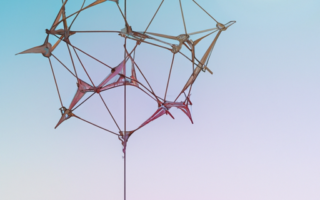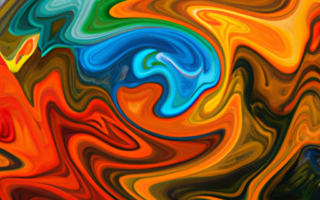Understanding the Essence of Abstraction
Understanding the essence of abstraction is crucial for unraveling its meaning and impact. Abstraction, in its simplest form, is the process of reducing complex ideas or concepts into simplified representations. It is a powerful tool used in various fields, including art, mathematics, computer science, and philosophy.
At its core, abstraction aims to distill the essential qualities of an object, idea, or phenomenon, while omitting extraneous details. This process allows us to grasp the underlying principles and structures that govern the subject matter. By focusing on the fundamental aspects, abstraction enables us to analyze, communicate, and manipulate complex systems more effectively.
In art, abstraction involves creating representations that depart from realistic depictions. Artists often use visual elements such as color, form, line, and texture to convey emotions, concepts, or aesthetic qualities without explicitly representing recognizable objects. This form of artistic expression encourages viewers to engage with the artwork on a subjective and interpretive level, stimulating their imagination and provoking emotional responses.
In mathematics, abstraction plays a vital role in establishing the foundations of various mathematical concepts. Mathematicians use abstraction to define general rules, principles, and structures that apply to multiple specific cases. This approach allows for the creation of mathematical frameworks that can be widely applied, leading to the development of advanced theories and applications in fields such as physics, engineering, and economics.
Similarly, abstraction is fundamental in computer science. Programmers utilize abstraction to build complex software systems by breaking them down into modular components. By abstracting away the inner workings of these components, developers can focus on the higher-level functionality, fostering code reusability, maintainability, and scalability.
Abstraction also finds its place in philosophy, where it is used to analyze and understand complex concepts and theories. Philosophers often employ abstract reasoning to delve into metaphysical, ethical, and epistemological questions. By extracting the essential elements and examining them in isolation, philosophers aim to uncover fundamental truths and insights about the nature of reality and human existence.
Understanding the essence of abstraction is essential for appreciating its profound impact in various domains. It allows us to break down complex ideas, uncover hidden patterns and structures, and gain deeper insights into the world around us. By embracing abstraction, we can navigate the complexities of our lives and disciplines with greater clarity and understanding.
Exploring the Influence of Abstraction in Art and Design
Exploring the Influence of Abstraction in Art and Design
Abstraction, as an artistic and design concept, has been a source of fascination and interpretation for centuries. Its meaning and impact have evolved and transformed over time, leaving an indelible mark on the world of art and design. In this comprehensive guide, we unravel the intricate layers of abstraction, examining its significance and exploring its influence in various artistic and design disciplines.
Abstraction, in its essence, involves the distillation of complex ideas, forms, or concepts into simplified and non-representational visual representations. It is a departure from the concrete and literal, instead embracing the subjective and intuitive nature of human perception. Through the use of shapes, colors, patterns, and gestural marks, abstraction seeks to convey emotions, provoke thought, and engage viewers on a deeper level.
In art, abstraction emerged as a response to the traditional representational styles that dominated the art world for centuries. Artists sought to break away from the constraints of depicting reality faithfully and instead aimed to express their inner visions and emotions. This shift in focus from the external world to the internal realm set the stage for the exploration of abstraction in various art movements, such as Cubism, Abstract Expressionism, and Minimalism.
Each of these movements introduced new ways of understanding and utilizing abstraction in art. Cubism, pioneered by Pablo Picasso and Georges Braque, fragmented objects into geometric shapes and presented multiple viewpoints simultaneously, challenging the notion of a fixed perspective. Abstract Expressionism, on the other hand, embraced spontaneity, emotion, and the expressive potential of gestural marks and drips. Artists like Jackson Pollock and Willem de Kooning utilized abstraction to tap into the subconscious and unleash raw, emotive energy onto the canvas. Meanwhile, Minimalism sought to reduce art to its fundamental elements, focusing on purity, simplicity, and precision.
Beyond the realm of fine art, abstraction has also made a significant impact on design. In graphic design, for instance, abstract forms, colors, and patterns are often employed to create visually compelling compositions, capture attention, and communicate messages in a symbolic and universal manner. Abstraction in design allows for a departure from the literal representation of objects and ideas, enabling designers to convey complex concepts and evoke specific emotions through visual metaphor and symbolism.
The influence of abstraction is also evident in architecture, where modernist architects embraced its principles to create buildings that embody simplicity, function, and clean lines. Architects like Ludwig Mies van der Rohe and Le Corbusier championed abstraction in architecture, advocating for the removal of unnecessary ornamentation and the use of industrial materials, resulting in minimalist and functional structures that have stood the test of time.
As we delve into the world of abstraction in art and design, it becomes apparent that its meaning and impact extend beyond aesthetic considerations. Abstraction allows for a deeper exploration of the human experience, emotions, and ideas. It challenges our perception, invites interpretation, and prompts introspection. Whether in art, design, or architecture, abstraction continues to push boundaries, stimulate creativity, and shape our understanding of the world.
In conclusion, the influence of abstraction in art and design is profound and far-reaching. Its power to transcend the literal and tap into the realm of the subjective and emotive has revolutionized artistic expression and design aesthetics. As we continue to unravel the layers of abstraction, we gain a deeper appreciation for its meaning and impact, and its enduring relevance in the ever-evolving world of art and design.
Decoding the Significance of Abstraction in Modern Culture
Decoding the Significance of Abstraction in Modern Culture
Abstraction, as a concept, is deeply ingrained in the fabric of modern culture. From art and design to technology and science, abstraction plays a crucial role in shaping our understanding of the world around us. But what does it really mean, and what impact does it have on our society?
Abstraction, at its core, is the process of simplifying complex ideas or objects into their essential elements. It is a way of distilling the essence of something, stripping away unnecessary details to reveal its fundamental nature. In the realm of art, abstraction challenges traditional notions of representation and invites viewers to interpret and make meaning from non-representational forms.
One of the key significances of abstraction in modern culture is its power to transcend language and cultural barriers. By reducing forms to their purest elements, abstraction allows for universal understanding and communication. Whether through abstract paintings, minimalist architecture, or experimental music, abstraction enables artists to create works that resonate with audiences across different backgrounds and experiences.
Moreover, abstraction has the ability to challenge our preconceived notions and expand our perspectives. By presenting familiar objects, ideas, or concepts in unfamiliar and non-literal ways, abstraction encourages us to question our assumptions and explore new possibilities. It pushes us to think beyond the surface and delve into the deeper layers of meaning.
In a world where complexity and information overload are the norm, abstraction offers a respite. It provides a sense of simplicity and clarity amid the chaos. Through abstraction, complex concepts can be distilled into simple visual or conceptual metaphors, making them more accessible and understandable to a wider audience.
Furthermore, abstraction fuels innovation and creativity. By breaking away from literal representation, abstract thinking allows for new connections and associations to be made. It opens up a realm of possibilities where ideas can be reimagined and boundaries can be pushed. This is evident not only in the realm of art but also in fields such as design, technology, and science, where abstraction is embraced as a catalyst for breakthroughs and advancements.
In conclusion, abstraction is a powerful and pervasive force in modern culture. It challenges our perceptions, facilitates universal understanding, encourages exploration, and fuels innovation. Whether we encounter abstraction in art, design, technology, or any other aspect of our lives, its significance cannot be overstated. By unraveling the meaning and impact of abstraction, we gain a deeper appreciation for its role in shaping our world.



